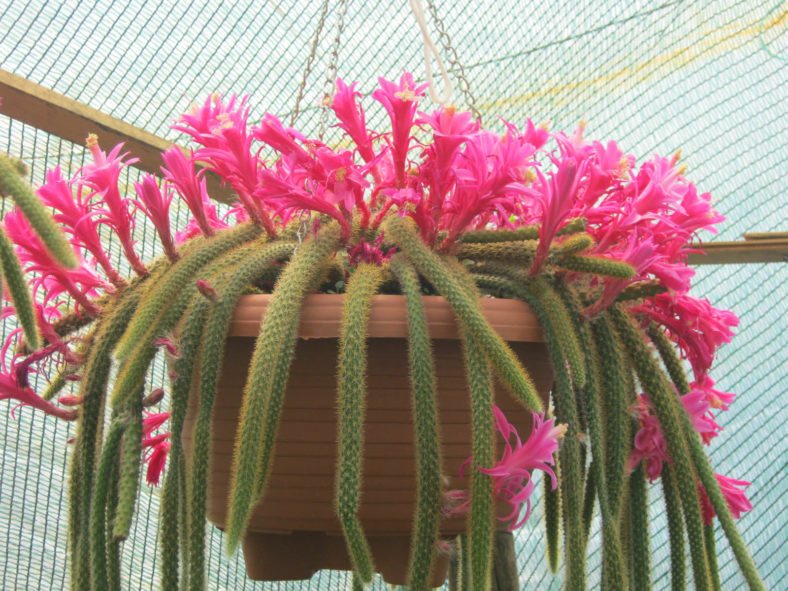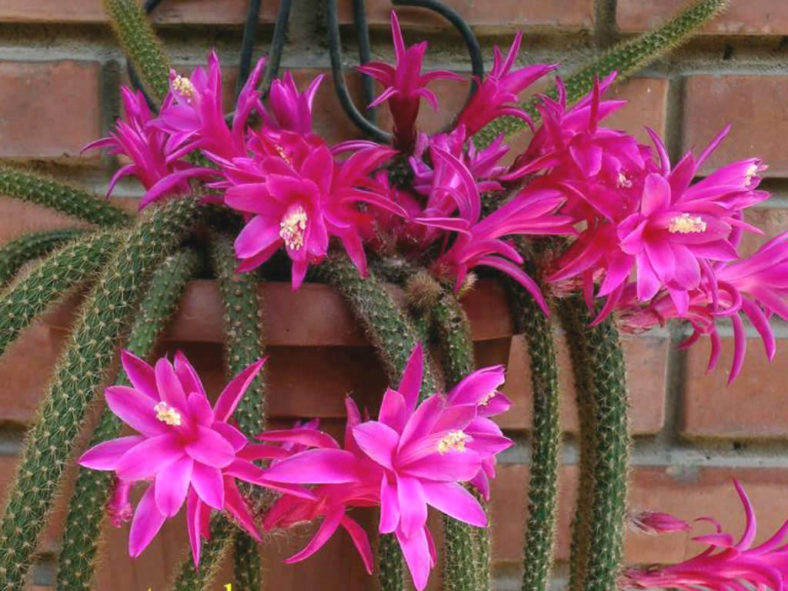Scientific Name
Disocactus flagelliformis (L.) Barthlott
Common Name(s)
Rat Tail Cactus, Rattail Cactus
Synonym(s)
Aporocactus flagelliformis, Cactus flagelliformis, Cereaster flagelliformis, Cereus flagelliformis
Scientific Classification
Family: Cactaceae
Subfamily: Cactoideae
Tribe: Hylocereeae
Genus: Disocactus
Description
Disocactus flagelliformis, also known as Aporocactus flagelliformis, is an attractive cactus with thick hanging stems with 8 to 13 ribs lined with clusters of bristle-like spines. The stems are slender, green to gray-green, and can grow up to 6.6 feet (2 m) long and 0.8 inches (2 cm) in diameter. Each whitish areole bears 15 to 20 reddish-brown to reddish-yellow spines that measure up to 0.4 inches (1 cm) long.
The magenta-colored flowers can reach up to 3.2 inches (8 cm) in length and 1.6 inches (4 cm) in diameter.

Hardiness
USDA hardiness zones 10a to 11b: from 30 °F (−1.1 °C) to 50 °F (+10 °C).
How to Grow and Care
Rat Tail Cactus is an easy-to-cultivate and relatively fast-growing cactus. Its trailing stems make this ideal cactus for a hanging basket. Line the basket with sphagnum moss before filling it with potting mix, and make sure it is hung where the prickly stems will not pose a threat to the unwary. If Rat Tail Cactus is grown in a pot, hang the pot up or attach it to a high shelf. If it is left free-standing, it can soon be overbalanced by the lengthening stems.
To propagate, use either 6 inches (15 cm) tip or 6 inches (15 cm) segment of the stem. Allow each cutting or segment to dry for three days, then insert it about 0.8 inches (2 cm) deep in a small pan or pot of the recommended potting mixture for mature plants. Be sure that any stem segment is planted with the bottom end down. If this shallowly inserted cutting tends to fall over, it can be supported by being gently tied to a small wooden stick. The cultivation needs of cuttings are the same as those for mature Rat Tail Cactus, and rooting will occur within a few weeks. Rat Tail Cactus can also be grown from seed.
Learn more at How to Grow and Care for Disocactus.
Origin
Disocactus flagelliformis is native to Mexico (Hidalgo, Oaxaca).
Hybrids
Links
- Back to genus Disocactus
- Succupedia: Browse succulents by Scientific Name, Common Name, Genus, Family, USDA Hardiness Zone, Origin, or cacti by Genus
Photo Gallery
Click on a photo to see a larger version.



